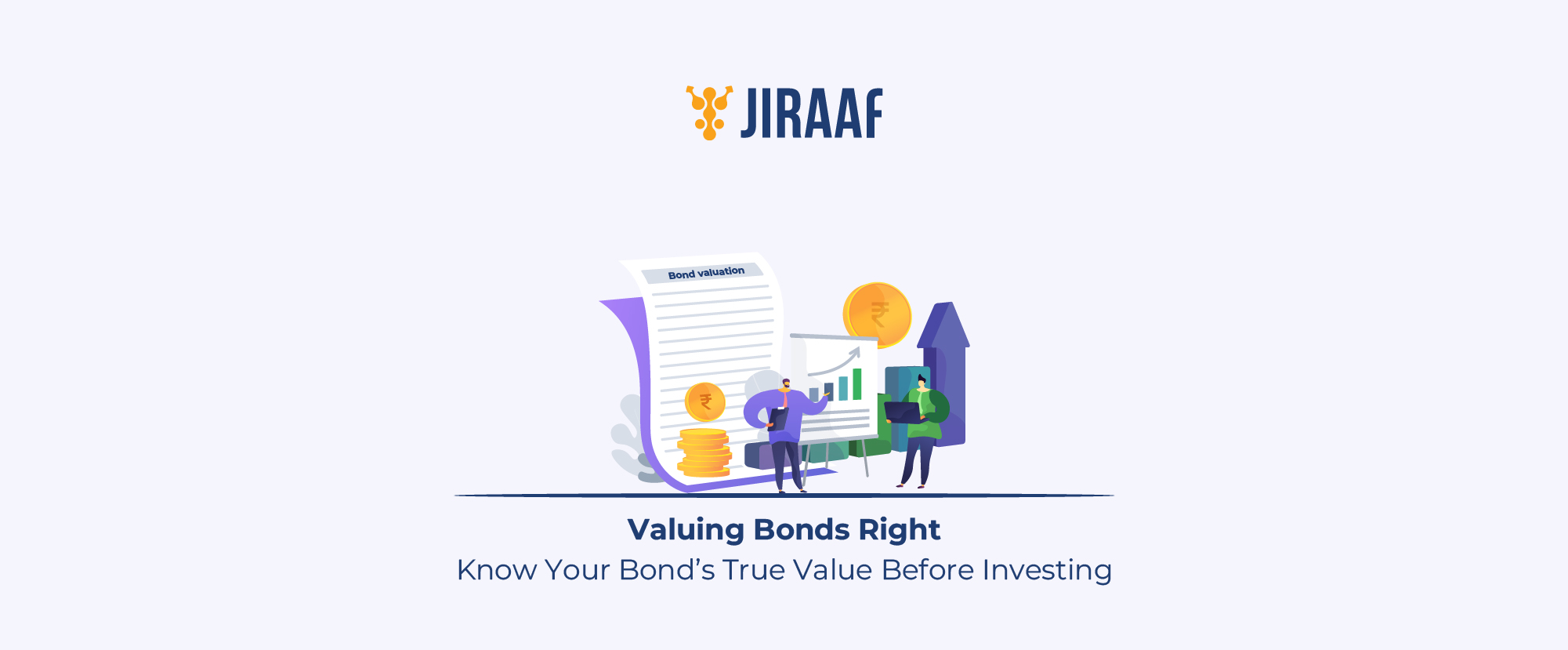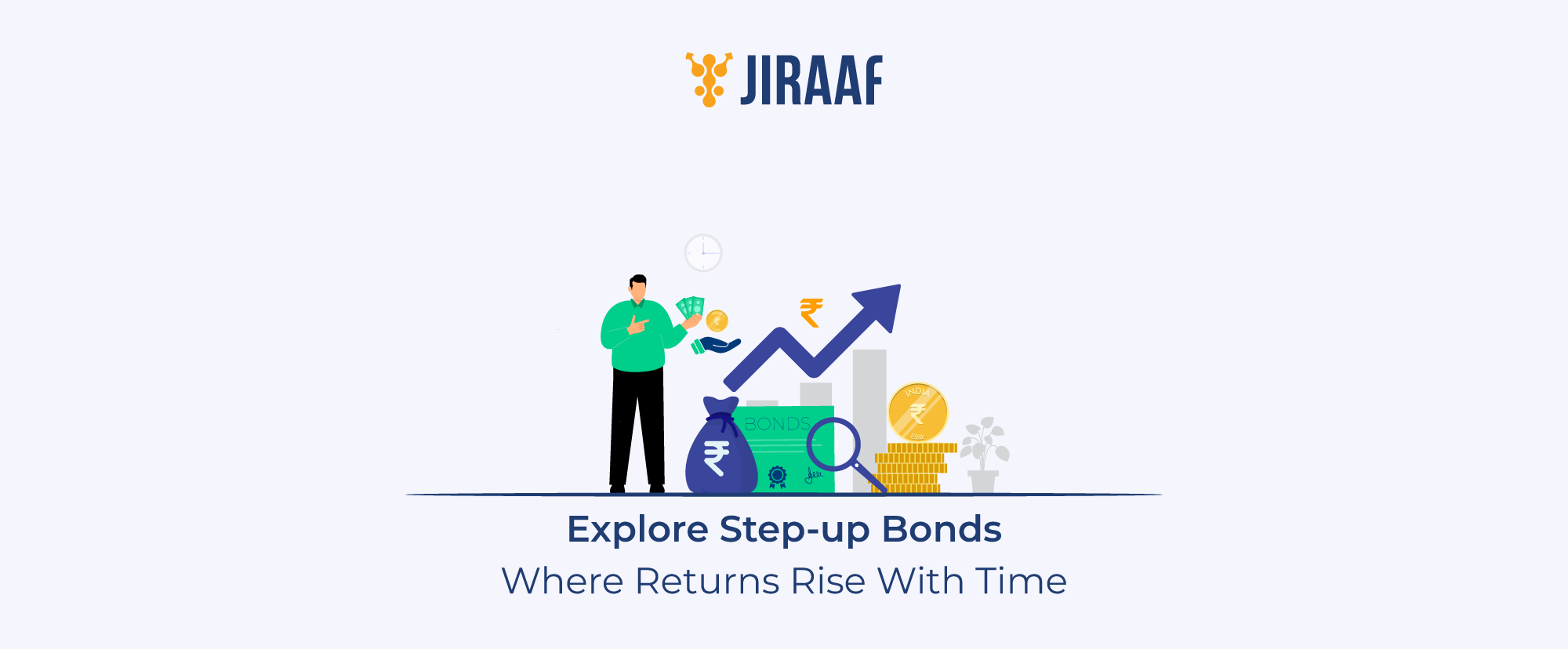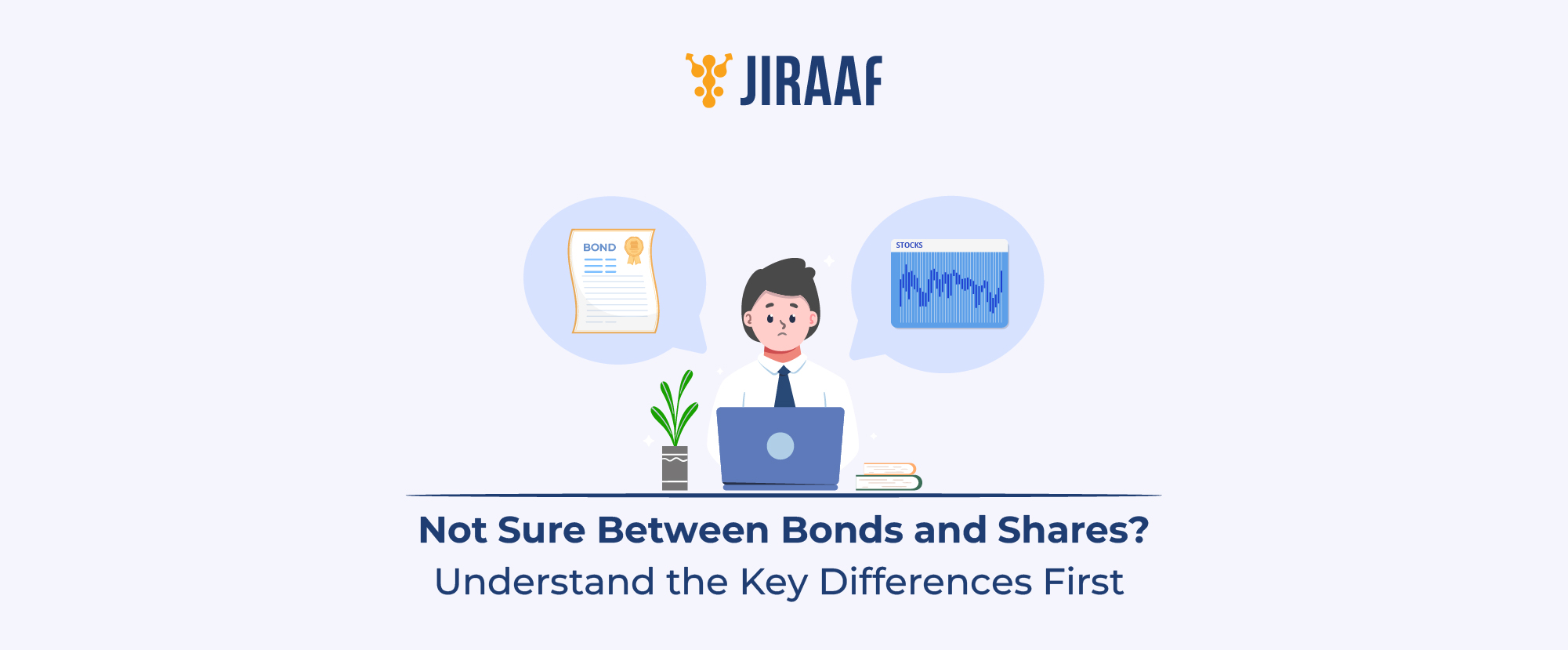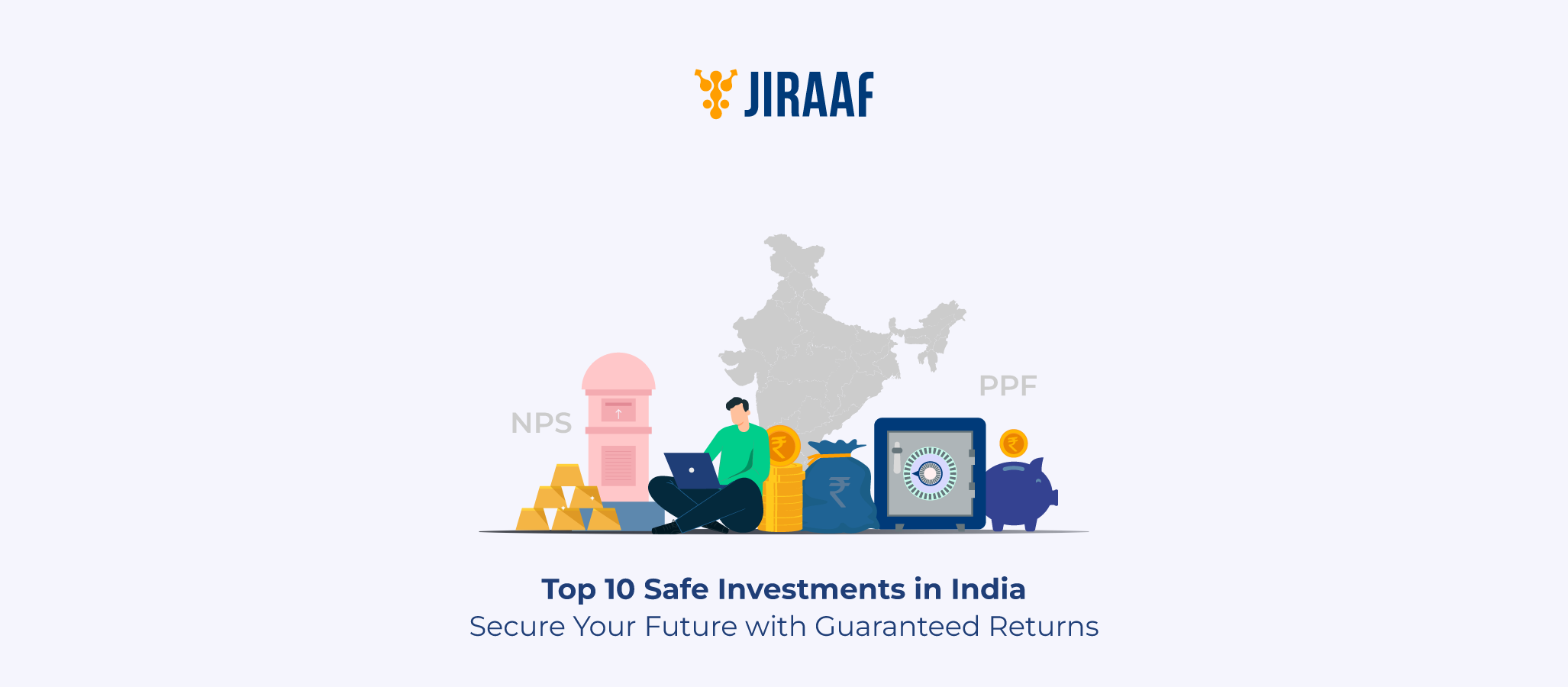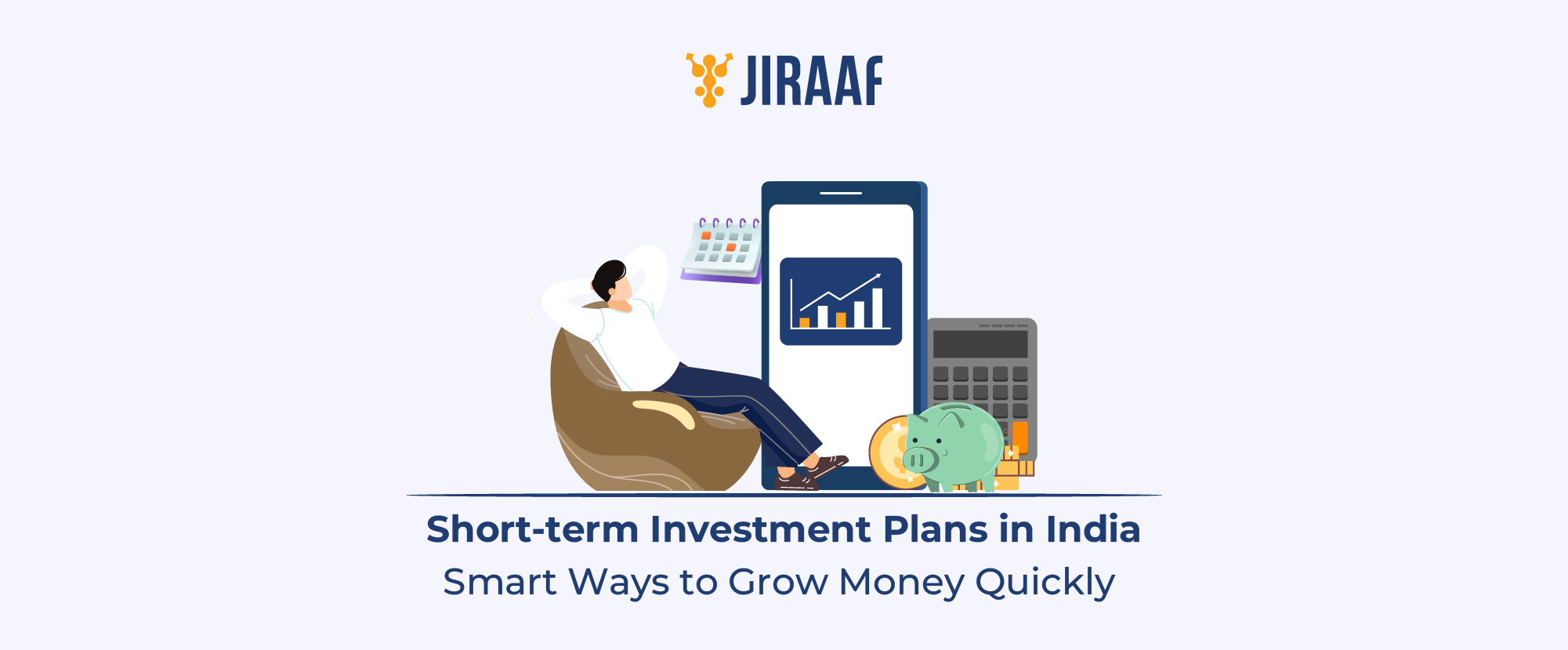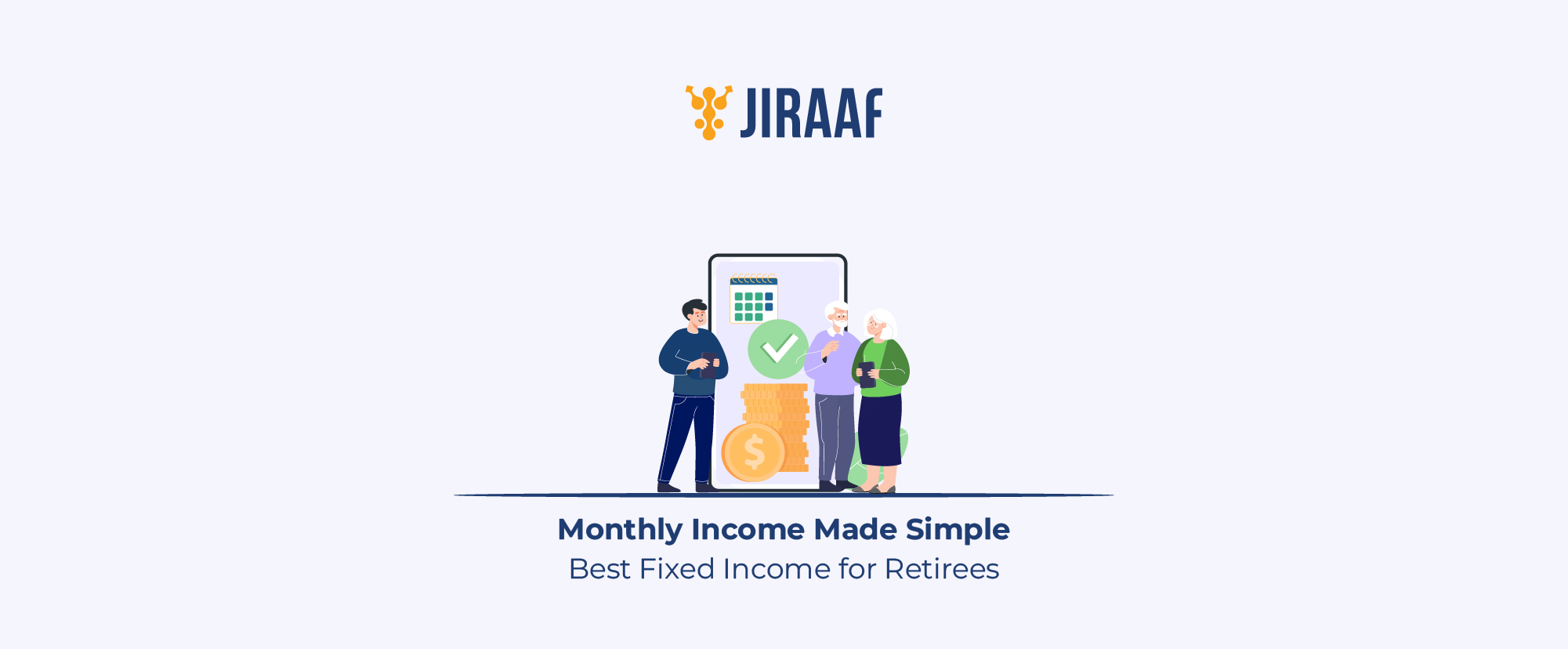Valuing a bond is one of the most important skills for any investor in the debt market. The price you pay for a bond determines the returns you ultimately earn, which makes understanding bond valuation critical. At its core, bond valuation is about answering one simple question: Is the bond priced fairly compared to the income it generates?
In this blog, we will walk you through the bond valuation process step by step. Along with this, you will learn a method and understand how to value a bond through an example. Let us get started.
What is Bond Valuation and Why does it Matter?
Bond valuation is the process of determining the fair market price of a bond. A bond’s value is not solely attached to the face value printed on the certificate. Instead, its actual value is calculated by discounting the bond’s future cash flows (interest payments and its maturity amount) to their present value.
The core principle behind bond valuation is the time value of money (TVM). TVM explains that a rupee today is more valuable than a rupee received in the future. For instance, if you had the option to receive ₹1,000 today or the same amount a year later, the rational choice would be to take it today. The reason is simple: you can invest that money immediately in a fixed deposit or a bond and earn additional interest.
To reflect the difference between the present and future value of money, the bond valuation process involves discounting all future payments that a bond promises back to their present value in today’s terms.
To calculate a bond’s value, we must use a formula that incorporates key variables such as the bond’s face value, coupon, time to maturity, required rate of return, and yield to maturity. Before we move on to the formula itself, let’s take a closer look at what each of these variables means.
Key Components That Determine Bond Value
1. Face Value (Par Value)
The bond issuer repays the face value, or principal amount, at maturity. We will use it as the foundation for all calculations, as coupon payments and the final redemption amount depend on this fixed value.
2. Coupon Rate
The coupon rate defines the annual interest payment as a percentage of the face value. We will include these payments in present value calculations to determine the bond’s total worth.
3. Maturity Period
The maturity period measures the time until the bond repays its principal. Longer maturities expose us to greater interest rate risk. Hence, we must discount cash flows more heavily with bonds that are maturing later.
4. Yield to Maturity (YTM)
Yield to maturity captures the total return when we hold the bond until maturity. It serves as the discount rate that equates the present value of all cash flows with the bond’s current market price.
5. Discount Rate
The discount rate represents the return we require from the bond. We will be applying it to each future cash flow to convert it into the present value, which helps us identify the bond’s fair market price.
Now that we know what the bond valuation process is and what the key components are in it, let us move ahead and discuss the bond valuation formula in detail.
Bond Valuation Formula and Explanation
The bond valuation formula helps us calculate a bond’s present value by bringing all its future cash flows back to today’s terms.
This is the standard formula used across the industry:
Bond Value = ∑ [C / (1 + r)^t] + [FV / (1 + r)^n]
Where:
- C = Coupon payment per period
- r = Discount rate (Yield to Maturity)
- t = Time period of each payment (1, 2, 3… up to n)
- n = Total number of periods until maturity
- FV = Face value of the bond
Here’s how it works: we take each future coupon payment along with the final principal repayment, then discount them back to their present value using the required rate of return. Once we add all these discounted cash flows together, we arrive at the bond’s fair market price.
The key here is choosing the right discount rate. That’s where yield to maturity comes in. Let’s discuss this in detail.
Yield to Maturity and Its Role in Bond Pricing
Yield to Maturity (YTM), also known as book yield or redemption yield, shows the total annualized return you earn if you hold a bond until maturity. It includes every coupon payment you receive along the way, plus any capital gain or loss when the bond matures. To calculate YTM, we have to find the discount rate that makes the present value of all a bond’s future cash flow equal to its current market price.
When market yields move up, the required YTM also rises, which lowers bond prices. When yields fall, YTM drops, and bond prices move higher. This inverse link between YTM and bond prices makes it a critical measure when we compare bonds with different coupons, maturities, or credit qualities.
This makes us come to the next section where we will look at an example of how calculations to value a bond work in action.
Practical Example: Calculating the Value of a Bond
Let’s take a look at a practical example and calculate the value of a bond registered on Jiraaf.
Mahaveer Finance India Limited.
Let’s value the bond using the exact purchase price of ₹51,630.
Bond Details
- Face Value (FV): ₹50,000
- Premium: ₹365
- Accrued Interest: ₹1,265
- Purchase Price (Market Price): ₹50,000 + ₹365 + ₹1,265 = ₹51,630
- Coupon Rate: 12% per annum
- Quarterly Coupon (C): ₹50,000 × (12%/4) = ₹1,500
- YTM: 11% per annum
- Quarterly Discount Rate (r): 11% ÷ 4 = 2.75%
- Remaining Payments (n): 3 quarters
Valuation Formula
Bond Value = Σₜ₌₁ⁿ [C ÷ (1 + r)ᵗ] + [FV ÷ (1 + r)ⁿ]
Step 1: Present Value of Coupons
Quarter 1: 1,500 ÷ (1 + 0.0275)¹ = 1,459.85
Quarter 2: 1,500 ÷ (1 + 0.0275)² = 1,420.78
Quarter 3: 1,500 ÷ (1 + 0.0275)³ = 1,382.76
Total PV of Coupons = 1,459.85 + 1,420.78 + 1,382.76 = ₹4,263.39
Step 2: Present Value of Face Value
50,000 ÷ (1 + 0.0275)³ = ₹46,091.89
Step 3: Total Fair Value
Fair Value = 4,263.39 + 46,091.89 = ₹50,355.28
(Note – This calculated fair value does not include the premium (₹365) or accrued interest (₹1,265); it reflects only the intrinsic value based on future cash flows.)
The bond valuation process tells us that the real value is smaller than the purchase price. Meaning, you will have to buy the Mahaveer Finance India Limited bond at a premium.
Bonds trade at a discount, par, or premium, primarily due to changes in interest rates. But did you know that bond prices can change due to other factors as well? Let us discuss them.
Factors That Affect Bond Prices in the Market
1. Interest Rates
Interest rate is the most influencing factor that affects bond prices. Bond prices and interest rates have an inverse relationship. Meaning, when rates rise, existing bonds with lower coupons become less attractive, and their prices fall. Conversely, falling rates push bond prices higher.
2. Credit Quality
Each bond issuing company or organization is assigned a credit rating as per their repayment capacity. If a company or government faces financial stress, the bond price may drop as risk perception rises. Upgrades, on the other hand, improve investor confidence and increase bond value.
3. Market Conditions
Broader economic conditions, such as inflation, GDP growth, or recession risks, affect investor appetite for bonds. During uncertain times, demand for safer bonds rises, lifting prices, while in strong economies, riskier assets may draw investors away.
4. Liquidity
The ease of buying or selling a bond also shapes its market price. Bonds that are actively traded in large volumes usually command fair or higher prices, while illiquid bonds may trade at a discount due to limited buyer interest.
5. Time to Maturity
The maturity period of a bond impacts its sensitivity to market changes. Long-term bonds are more volatile to interest rate shifts since cash flows are spread over many years, while short-term bonds experience smaller price fluctuations.
Conclusion
A bond’s true worth lies in the present value of the income it generates, not in its face value or market hype. Investors who consistently apply this principle are better equipped to avoid overpaying, identify undervalued opportunities, and build portfolios that balance safety with returns
By understanding how to discount future cash flows, and interpret market factors like interest rates and credit quality, you gain clarity on whether a bond is worth its price.
